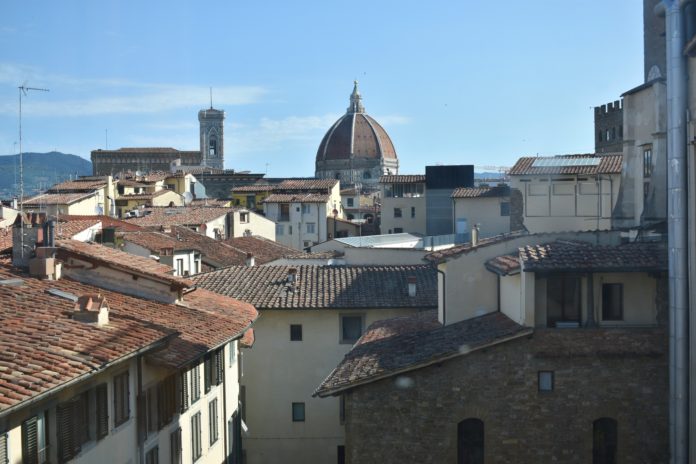
Kaitlyn Vana | Contributor
In a world shaped by the internet’s infinite access, traveling becomes a lot like a checklist. Instead of exploring and experiencing cities on our own, travelers turn to the web, where Yelp, TripAdvisor and others offer helpful suggestions often at the cost of truly connecting with travel destinations. Some cities and sites are meant to be breathed, experienced and encountered off a tour bus and away from a tour guide.
In no place can you learn this better than in Florence, Italy. I visited Rome, Venice, and Florence this summer through a high school study abroad program, and as such I was expecting every day to be packed with museums and ruins and churches, and, when not at a site, sitting on a bus.
I think we stepped on a bus twice, once from, and the second, to the airport. Walking around cities like Florence was the only way to experience the archaic essence beneath the suffocating tourism. The trip leaders understood this, and maybe one of my favorite days was when we had no agenda at all. Our chaperones told us to meet for dinner at seven, but the rest of the day was ours to explore the city.
My group decided to attend mass at the Duomo, rather than wait in the long line of tourists later on. Despite being led completely in Italian, it was probably one of the most incredible experiences I have ever had. My Catholic friends took communion where Italians have since the days of the Renaissance. The organist led worship which has rang through the same beautiful walls for centuries. We experienced the church as it was meant to be experienced, clear from the sense of normality which often comes as a side effect of tourism. It was an instance of attaching importance to a stereotypical tourist attraction for reasons more than because it’s famous. Social media and travel sites cloud over the culture with likes and “top 10” lists.
The rest of the day was full of other awesome discoveries, from a mom-and-pop clock shop to a small Leonardo da Vinci museum cramped with interactive replicas of his inventions. We found these wandering, not glued to travel sites.
We had a similar experience in the Uffizi. What made the experience different than the millions of other times this art museum has been visited was the perspective with which the program taught us to view it.
Rather than research and book a guided tour showing only the standard highlights, each student chose a historical figure to record and analyze. I chose Judith and Holofernes, and all at once the over 45 museum halls, each an endless maze of art, became more engaging and easier to swallow. It became more memorable, too, because I remembered it for the angle and perspective that I approached it with the story of Judith and Holofernes.
Instead of making TripAdvisor and Yelp the lifeline when traveling, it should be what it was created to be, a suggestion. This way travelers can again develop new perspectives, angles and genuine experiences.
I’m not advocating for travel snobbery, though. When we travelled to Venice I still took a gondola ride like everyone else. I ordered Pizza Margherita every day. I stood agape in the presence of Michelangelo’s “David.” Sometimes the “checklist” activities are stereotypical for a reason, so don’t skip the Colosseum just because it’s your typical tourist attraction. Nothing about the Colosseum is typical.
Go out and take that Colosseum selfie, but be wary of letting routine and lists consume your experience. You may miss the things that enhance a city, that make sites like the Colosseum more than just a tourist attraction.
I understand planning so as not to waste time in cities filled with infinite things to do, but travels consumed by web-suggestions and research tame a once romantic and surprising world. Even if you make a mistake and find a rotten place for lunch, it still makes for a genuine experience and perhaps a story to tell. Take a selfie with the Colosseum, but then stop and imagine the history behind it. Develop a new perspective – and don’t be afraid to wander.





